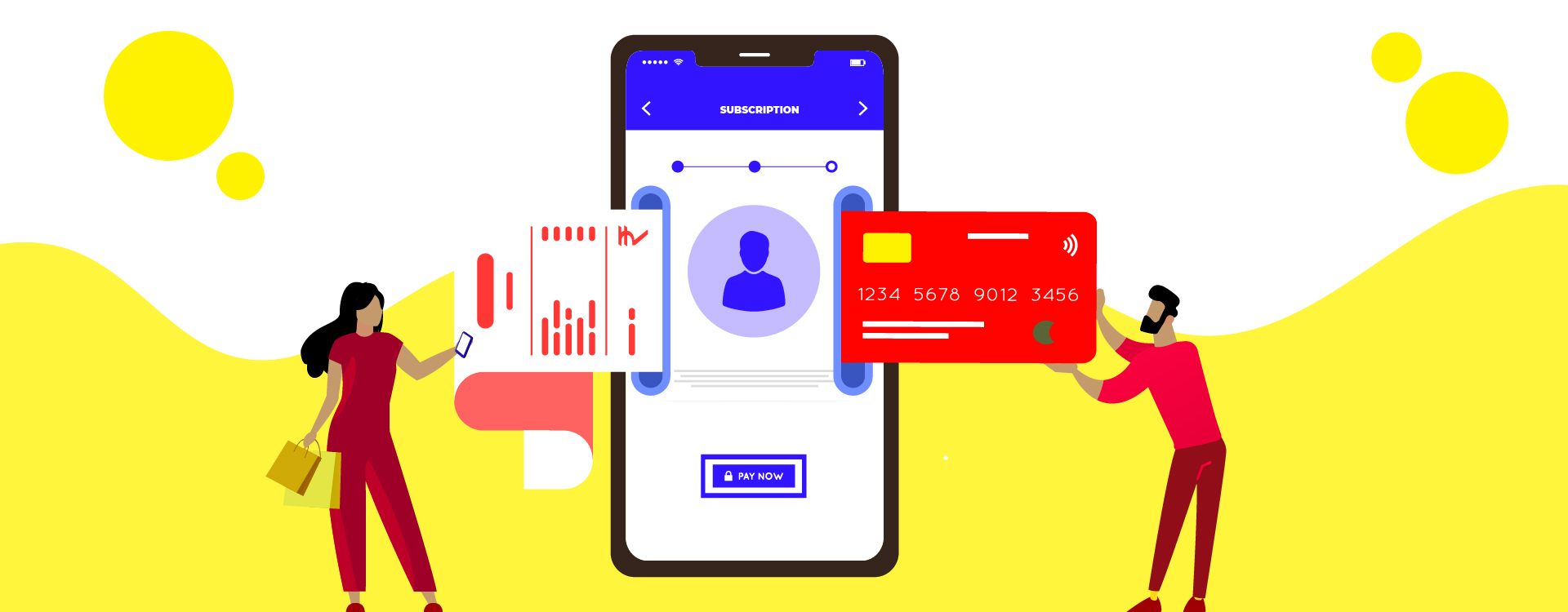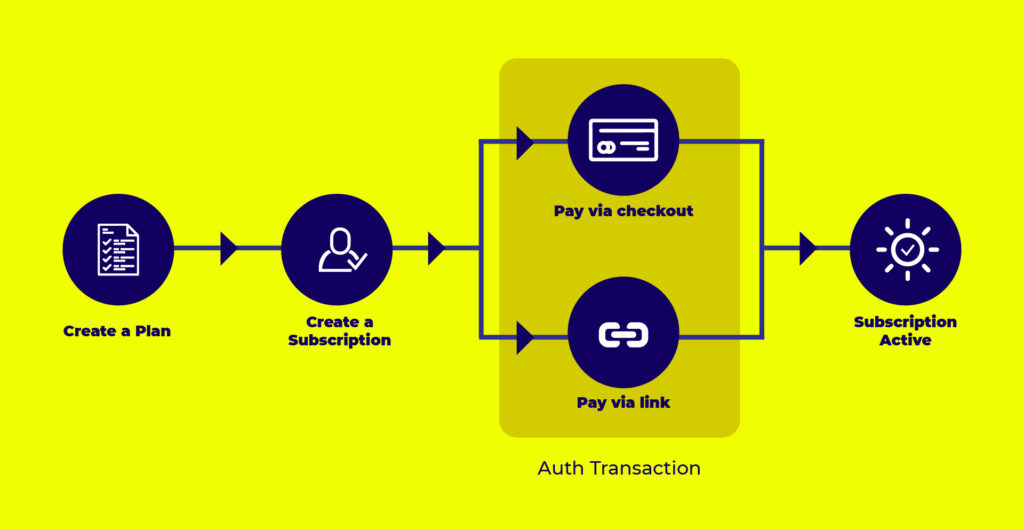The emergence of the subscription model can be dated back to the times when traditional milkmen sold fresh milk by delivering milk directly to the households. Soon, this subscription model became the sole mantra of generating revenue by the OTT platforms Netflix, Amazon Prime, etc., and soon startups from various business verticals such as cosmetics, socks, personal wellness, car rentals, news portals, hospitality are following the suit of the subscription model. The startups and companies’ shift towards subscription-model is attributed to varying customer preferences and expectations that are favouring access to services over the ownership of physical products. . The subscription model benefits both consumers and businesses in multiple ways. In industries where the demand is either for regularity of service or a bouquet of services, a lump sum one-time amount does not serve the purpose. For consumers, subscriptions seem to be more affordable than buying a product or service for single use. It gives customers the power to switch to a different service provider in case they are not satisfied with the product. The subscription model is customer-centric that forges a long-term relationship with a company through smaller and regular payments. It induces recurring business by reducing the friction where a customer has to go back to go through the checkout journey again.
‘‘
The subscription model is customer-centric that forges a long-term relationship with a company through smaller and regular payments.
Subscription Model is Beneficial for Startups
Besides, the subscription model, being customer-centric, is beneficial for the startups in various ways. Income from the subscriptions creates a consistent pipeline of cash flow that determines the valuation and from which future revenue generation can be estimated. For a startup or any new business recurring revenue creates a safety net that helps in attracting investors as well. With subscription mode, the management of inventory and supply chain becomes convenient. Startups and businesses, through this model, will have access to the first-party data. The first-party data comprises direct connections with customers and data signals that allow companies to gain consumer insights.
Examples of Business verticals that have implemented a subscription model
Direct-to-Consumer (D2C) socks selling brands such as The Moja Club, Soxy Toes, SockSoho have revolutionised the socks selling in India by giving it a subscription touch. A pair of socks is the only accessory for men that has monotonous colours such as white, grey, blue, and black. With the subscription model, by paying a certain amount customers can get various designs, colours, pop culture quotes, their names, etc. printed on socks to add a style statement to it.
Amid pay cuts, congested roads, lack of ample parking space, irregularities in fuel prices, high interest rates, lack of credit history, and rise in insurance premiums are the reasons people are not considering purchasing cars. Instead of buying a car, the urban young consumer chooses to opt for a subscription. The new trend of car subscription’ is now gaining grounds that makes owning a car hassle-free and easy driving. Vehicle subscription can be defined as a service where the customer pays a recurring amount to use automated vehicles. The car subscription suits perfect for the individuals who have transferable jobs or those who have shifted to a new city for project basis work that will demand their presence for a few months or years. The individual does not have to worry about transporting or owning a car across cities.The pandemic has severely hampered the newspaper circulation in the country that have led the renowned publication houses and brands such as Bennett and Coleman, Mint, The Ken, Inc 42, and other digital news portals to seek refuge under the subscription model for the digital version of the newspapers to revive the sales and stay afloat.
Can Subscription payments from Razorpay help Here?
Razorpay provides a platform for businesses to set up customer subscription plans and manage recurring transactions. In an automated recurring payment, the business owners have the liberty to charge as per a billing model decided by themselves and do not require any intervention from the customer as the process is automated. Using Razorpay subscriptions, we can automatically charge customers on a billing cycle that we can control. The subscriptions on Razorpay’s platform can be easily managed with the benefits of receiving instant notifications on the payment activity, automatically handling invoices for all subscriptions.
Types of Razorpay Subscriptions
Below are the different types of subscription -model services that Razorpay offers:
Recurring on cards and Netbanking
This subscription model allows customers to authorise their netbanking or credit/debit card details at a time and collect payments regularly with ease.
eMandate
eMandate is a digital payment service started by RBI (Reserve Bank of India and the National Payments Corporation of India (NPCI). It is an infrastructure for businesses in India to collect recurring payments that eliminate human interference by instructing the banks and other institutions allowing them to debit the mentioned amount from the respective bank account. It works like this- firstly the business owners request for a recurring mandate.
Through the portal or link, the business sends an authorisation request. The customer after receiving the request gives the authorisation through netbanking credentials or debit card details. NPCI sends the request to the issuing bank, which accepts the authorization request and shares the status with NPCI who again shares status with the sponsor bank. This status is shared with Razorpay who informs the business and activates the eMandate subscription.
eMandate is a convenient way for businesses to collect recurring payments such as insurance premiums, SIPs, loan installment collections, etc. Thus, eliminating the reminders and late penalty charges that benefit both customers as well as businesses.
Paper NACH
NACH stands for National Automated Clearing House. Companies earlier offered physical NACH services had to go through a cumbersome 15-30 mandate registration cycle where multiple stakeholders and hops were involved. As the process was manual, the chances of error were also high. There was no error identification mechanism in the process. The applicant who applied for a subscription for its business was informed only when the request for a subscription was rejected.
Let us understand how Razorpay’s NACH process. The customer fills in details such as bank account number, contact information, etc. These details get captured with Razorpay. After the details are captured the business owners get an e-form and a link is generated. This link can be shared via SMS, email, WhatsApp, etc. The customers can download the form, sign it and upload it back. After your customer successfully uploads the mandate, businesses can track the status, debit money, and send responses anytime by logging into the dashboard. Razorpay’s paper NACH process is powered with an OCR (Optical Character Recognition) engine, eliminates the probability manual process, and has strong error detection mechanisms.
Aadhar based mandate
In aadhar based eMandates, business owners can set up subscriptions through e-sign and it is the most preferred by the business owners.
How Razorpay Subscriptions Work
The Razorpay subscriptions do not require any intervention from the customer. It is a payment collection system that needs a one-time approval from the customer via an authentication transaction. Below are the steps to understand how a subscription works:
The customer’s approval is solicited before recurring payments are collected. This approval process is just like any normal payment with the 3D Secure authentication step. In the authentication step, it seeks permission from the customer to deduct the amount.
2. Once the authentication transaction is completed, the card is automatically charged at the start of every billing cycle.
3. For every recurring payment, Razorpay automatically generates an invoice that includes customer and subscription details along with your branding. This makes subscriptions an end-to-end solution.
Various Billing Models in Subscription
Razorpay Subscriptions supports three different billing models:
Fixed Schedule and Fixed Amount
Here the customer is charged a fixed amount at fixed intervals of time for a fixed quantity of goods or services. This is done by first creating a plan with a fixed amount and fixed billing frequency.
Fixed Schedule and Fixed Amount plus Add-ons
A fixed amount at fixed intervals of time is charged, but can opt for extra goods or services by paying an extra charge for them. This billing model is created by first creating a plan with a fixed amount and billing frequency and creating a subscription basis for the plan. The extra goods or services availed can be added to the subscription via add-ons.
Fixed Schedule and Variable Amount
This billing system charges the customer at fixed intervals of time according to their usage in the defined time interval. Here, the subscription amount and the quantity of the goods or services are not fixed. The plan in this billing system is created with a fixed amount and charges the customer a variable amount based on their usage.
‘‘
The Razorpay subscriptions do not require any intervention from the customer.
Updating subscriptions
After the subscription is live, we can always update it. We can update the following in the subscription plan:
- We can update the quantity in the subscription plan that is the number of times the plan amount should be charged to the customer per billing cycle.
- We can update the Subscription Start Date. The start date is the date from which we want the updates to take effect for the updated subscription details. The change in the date can be made immediately or at the end of the current billing cycle.
- The total number of billing cycles can be updated. This will determine the duration of the subscription.
Cancelling the subscription
We can cancel the subscriptions at anytime during their lifecycle. Once a customer’s subscription is cancelled no invoices will be generated on that subscription and cannot be reactivated. The subscription can be cancelled immediately or at the end of the current billing cycle. It can also be cancelled at various stages namely authenticated, active, or halted. In case the money is to be refunded to a customer after cancelling a subscription, it can be returned in the previous payment on the subscription. Thus, Razopay’s subscription offers a business the flexibility to opt for various subscription plans, billing models, and instant notifications that will aid in the smooth implementation of the subscription model generating a consistent cash flow and increasing customer loyalty. So, without much wait, get started with your Razorpay subscription plans.





